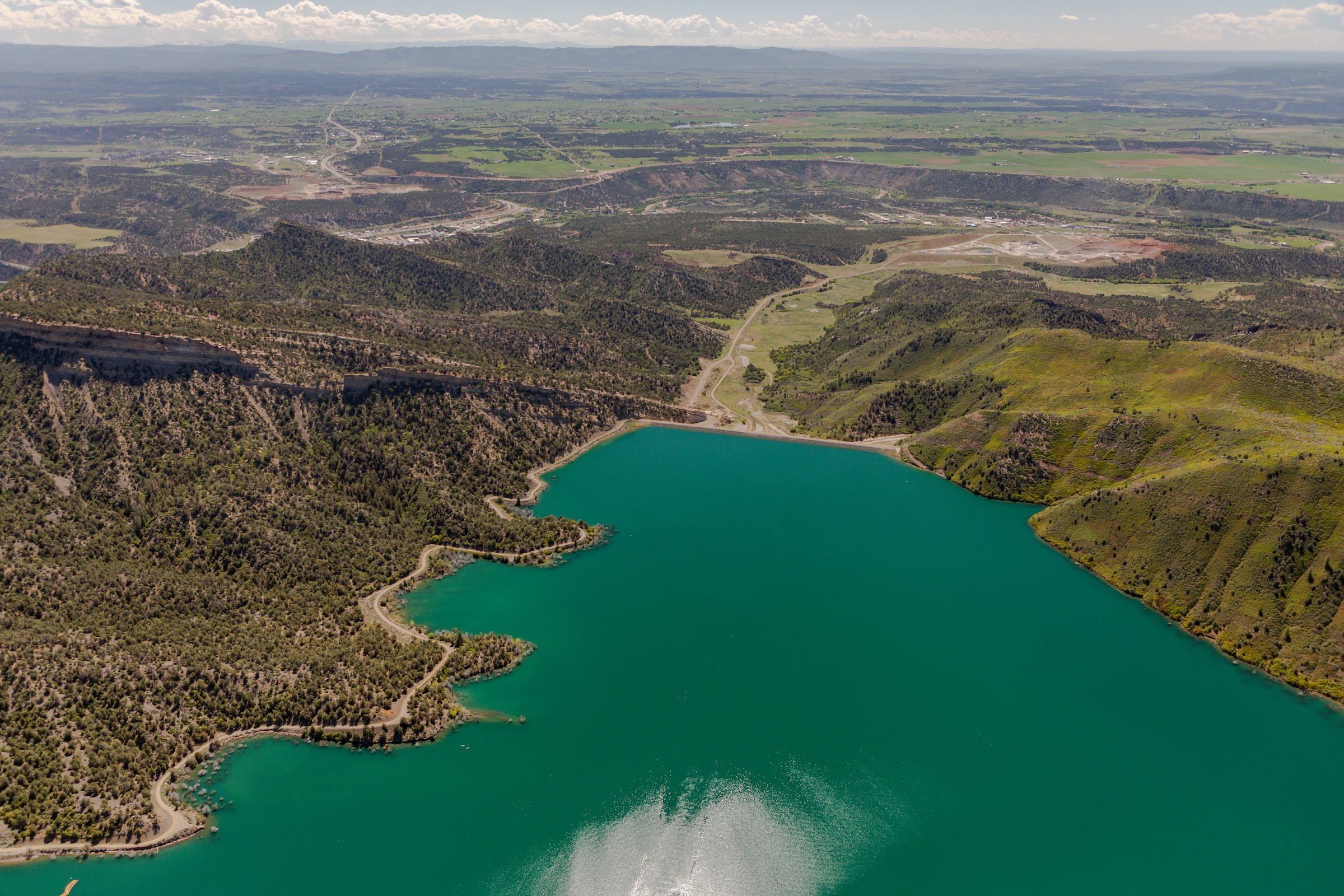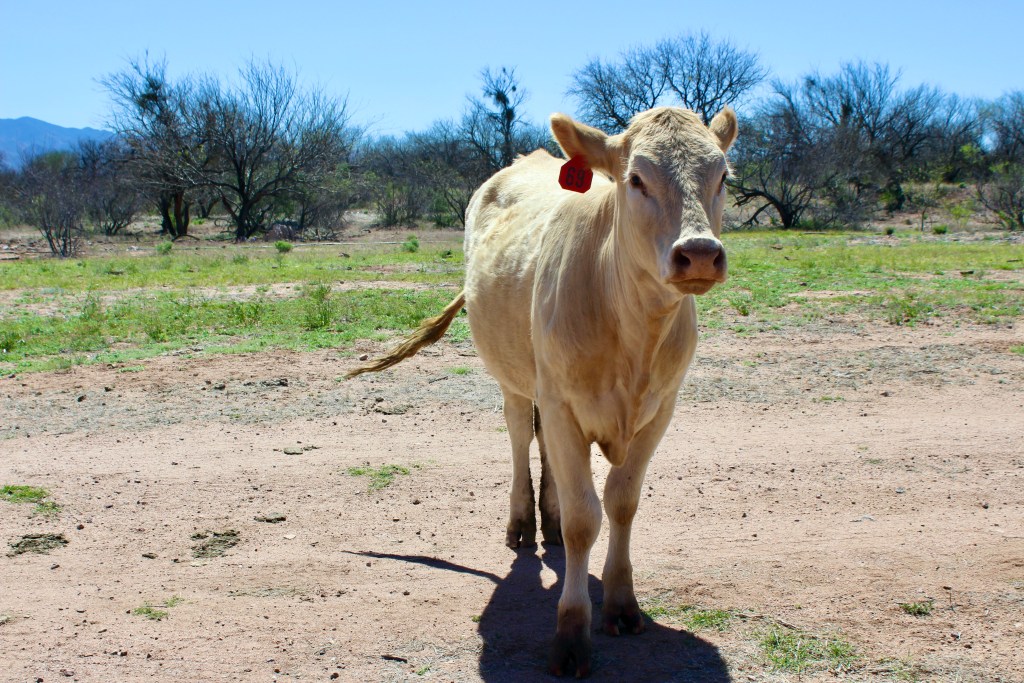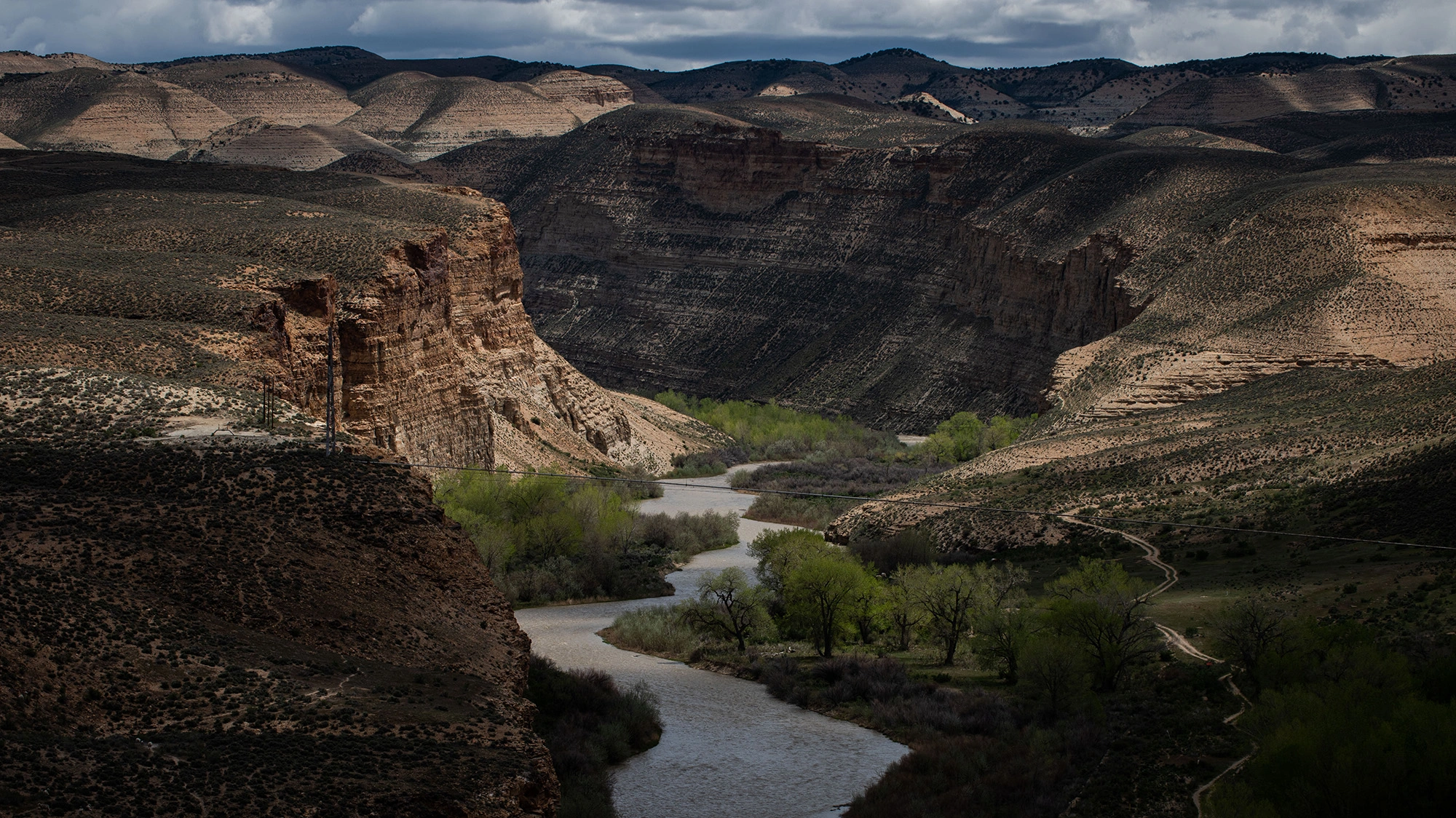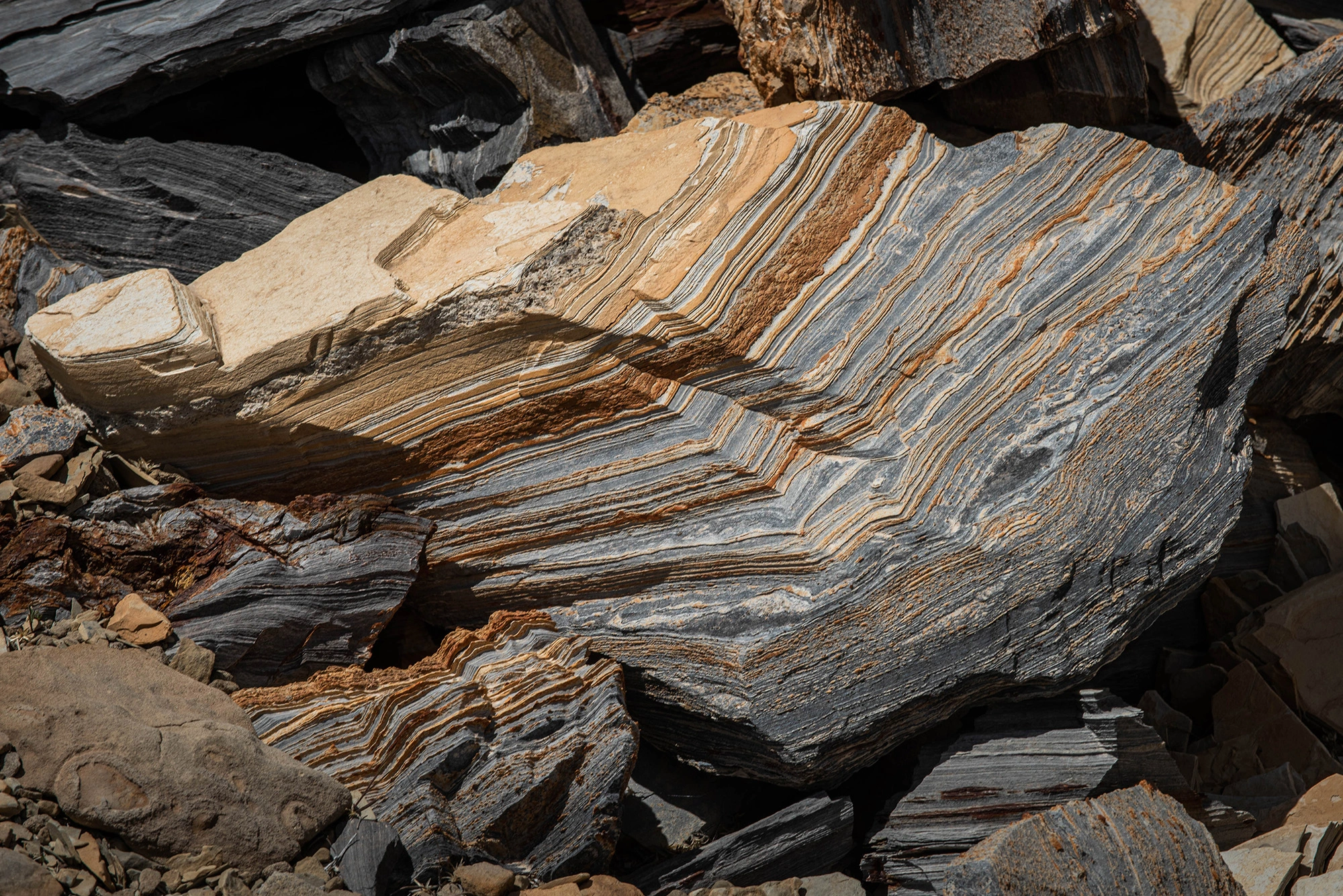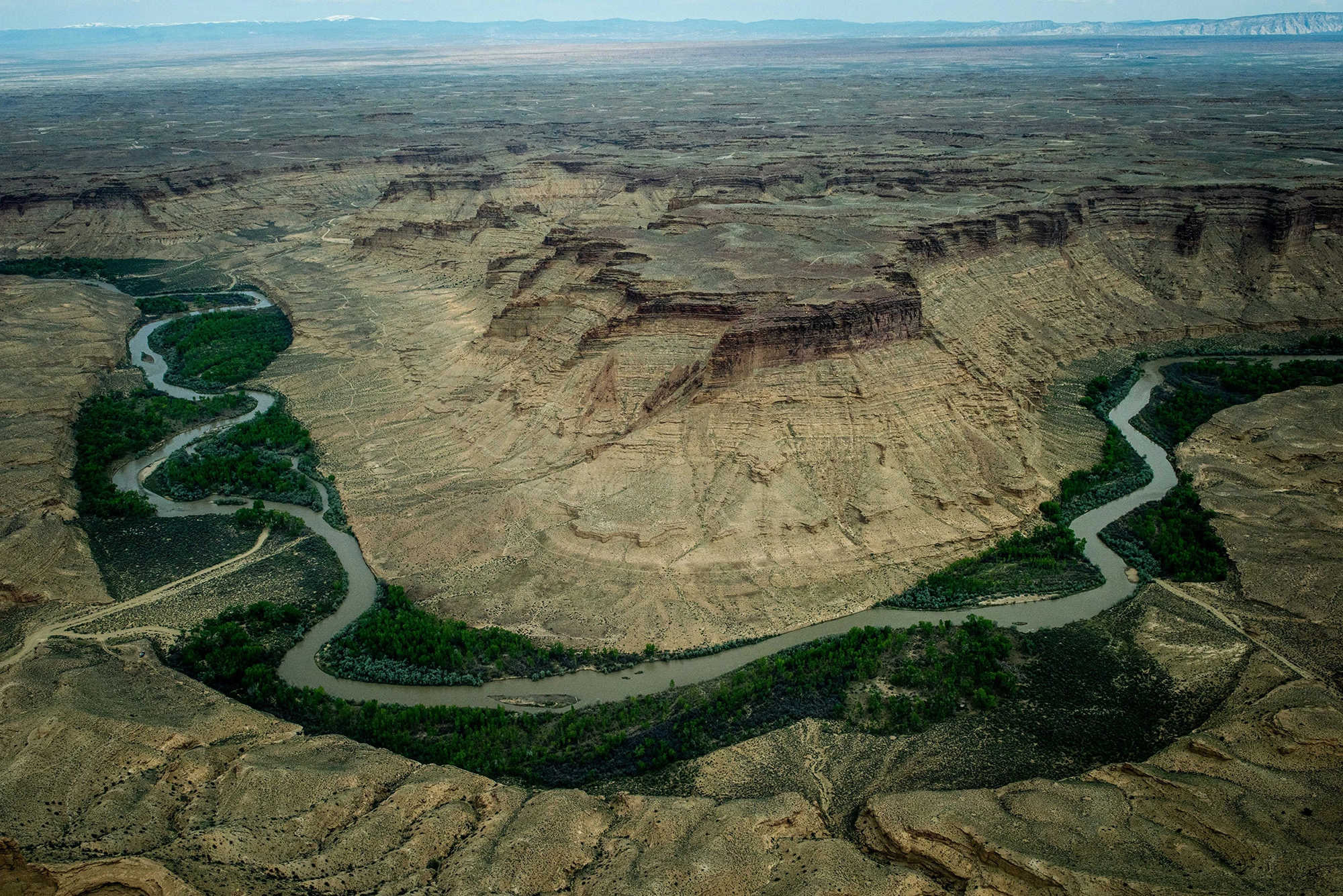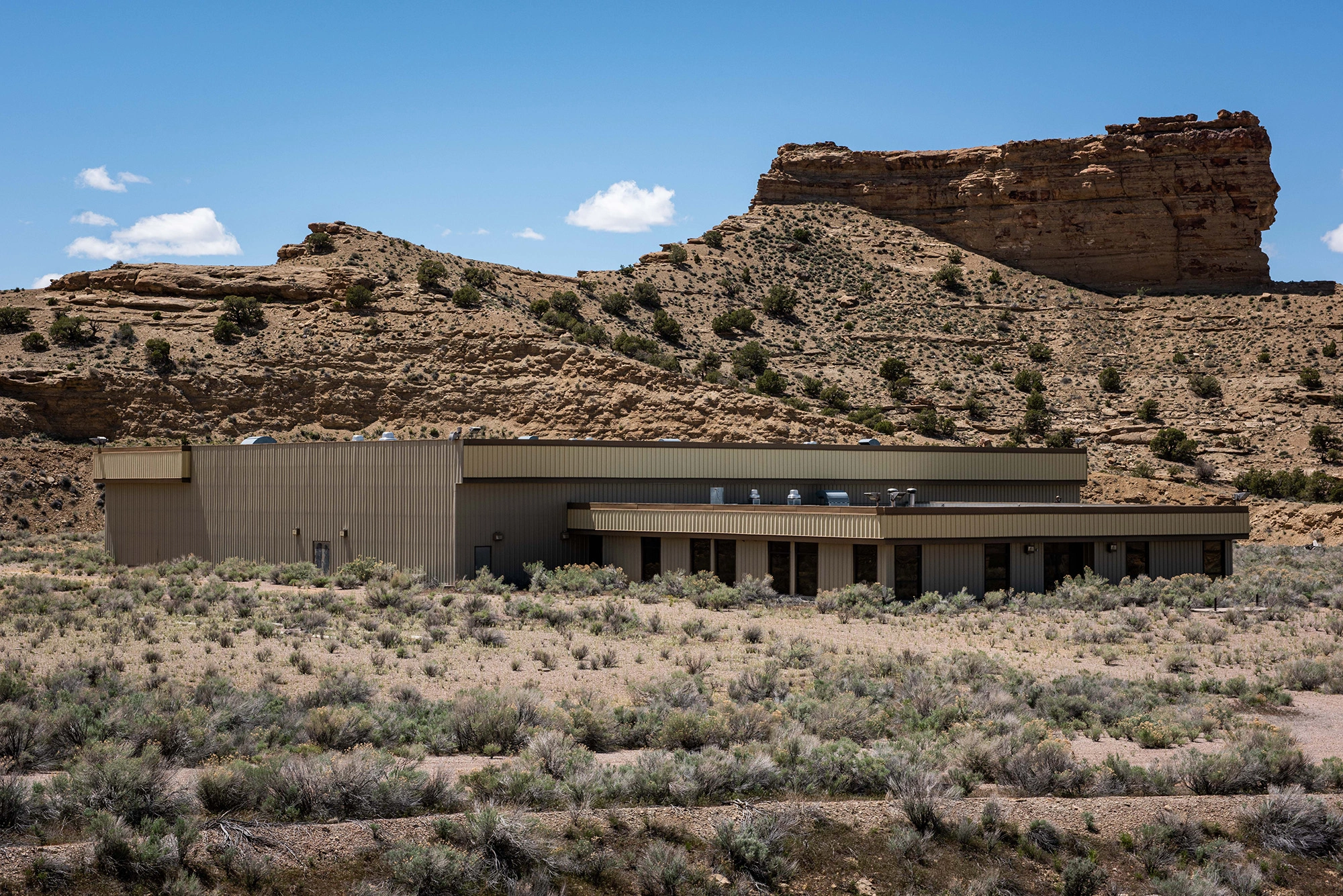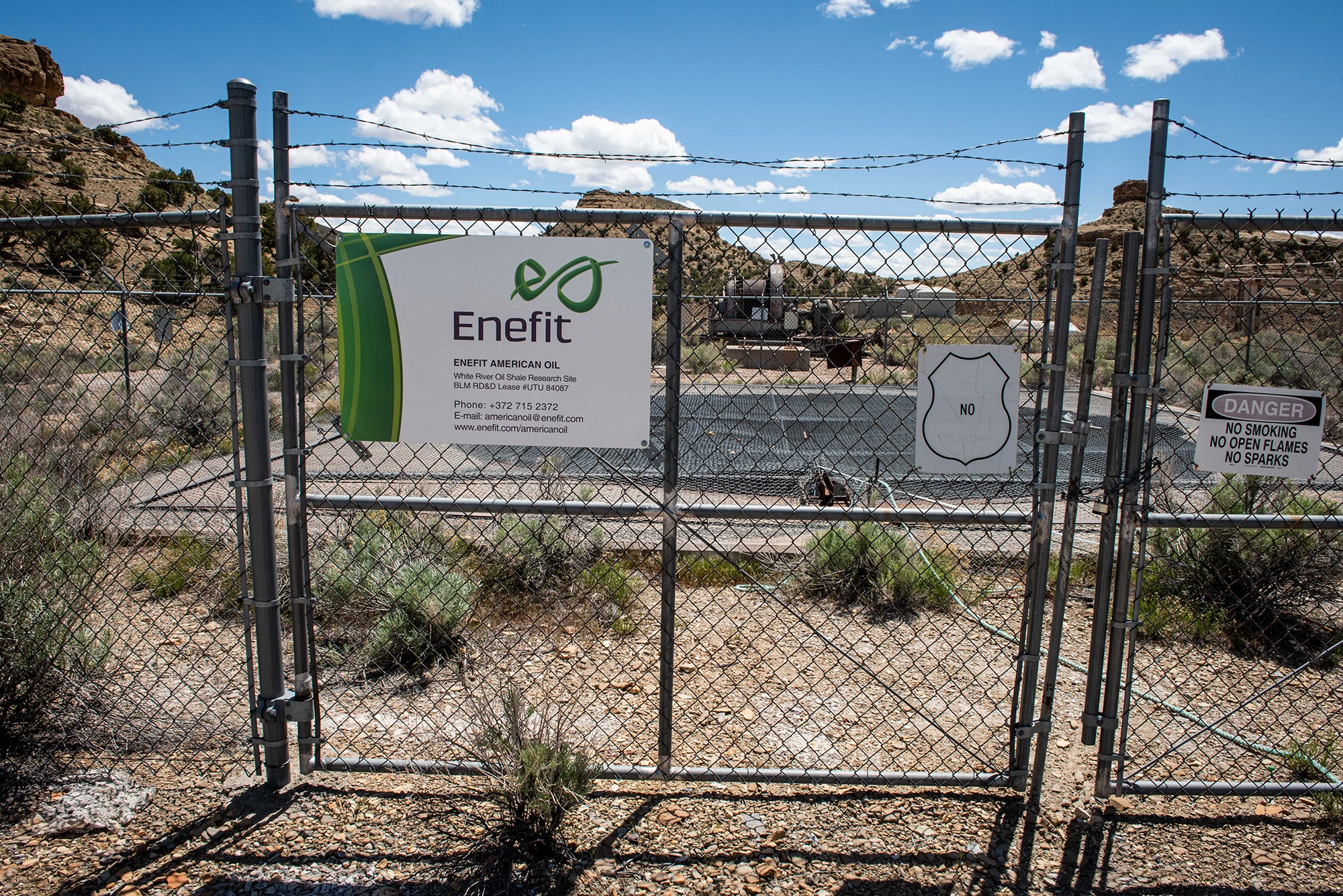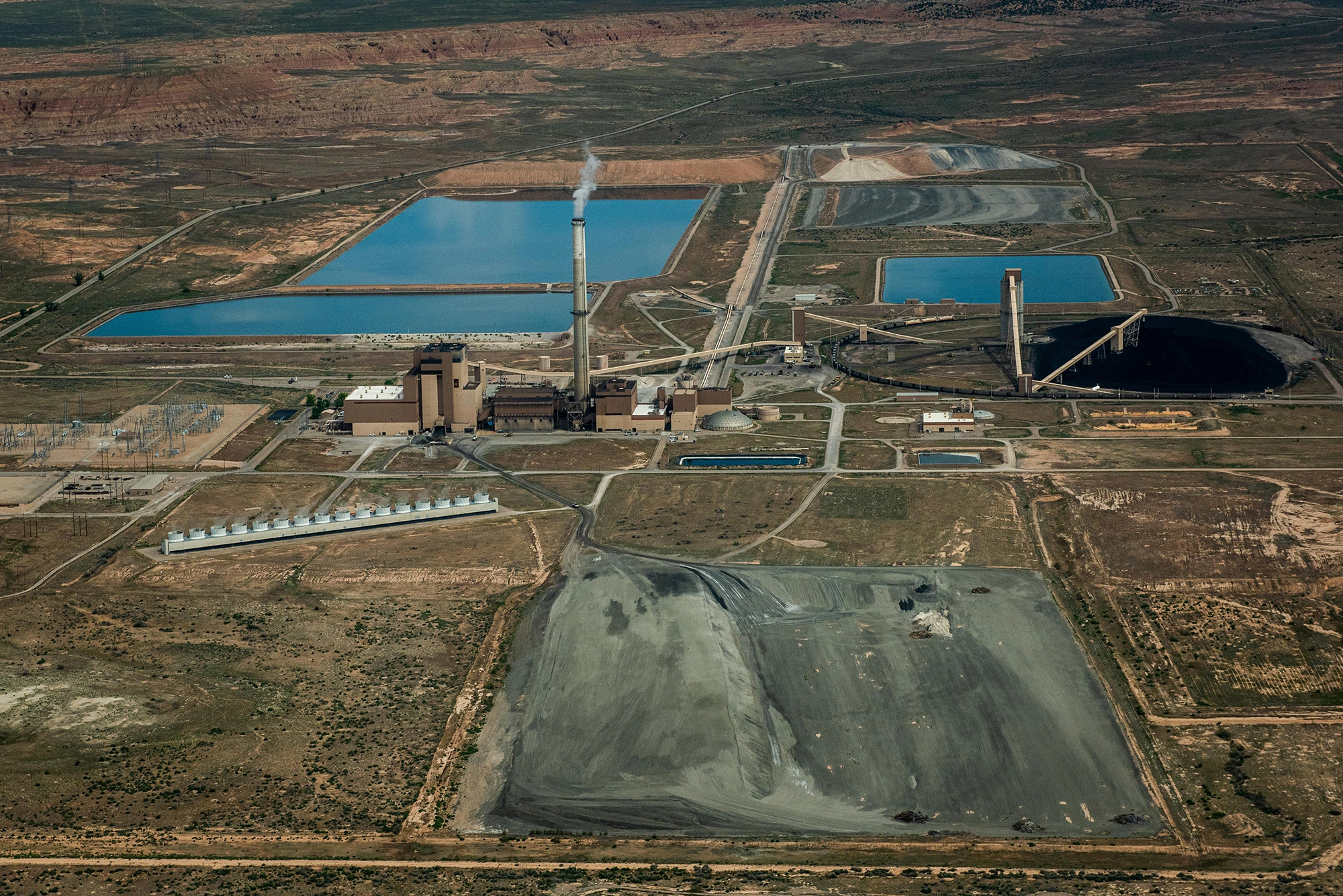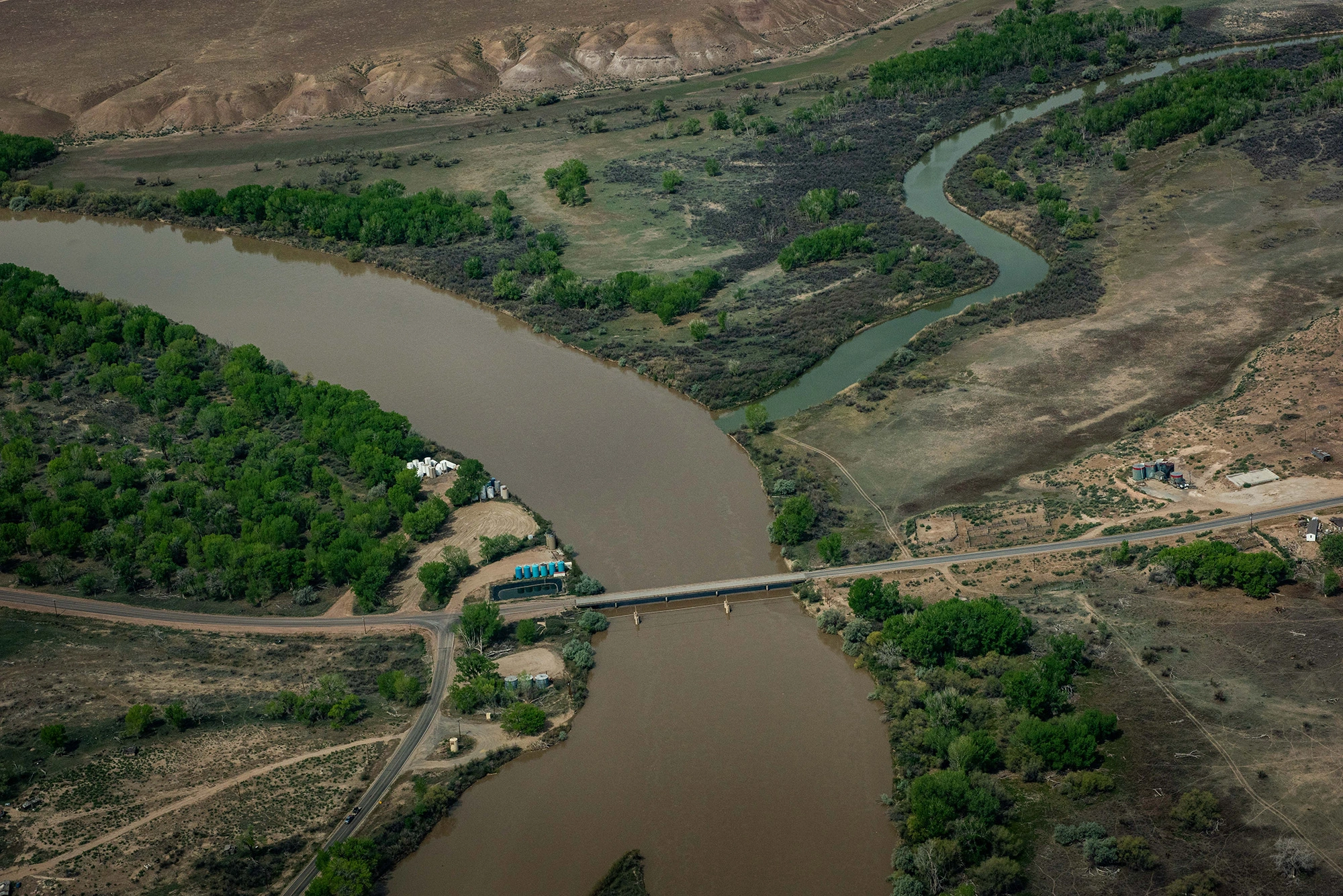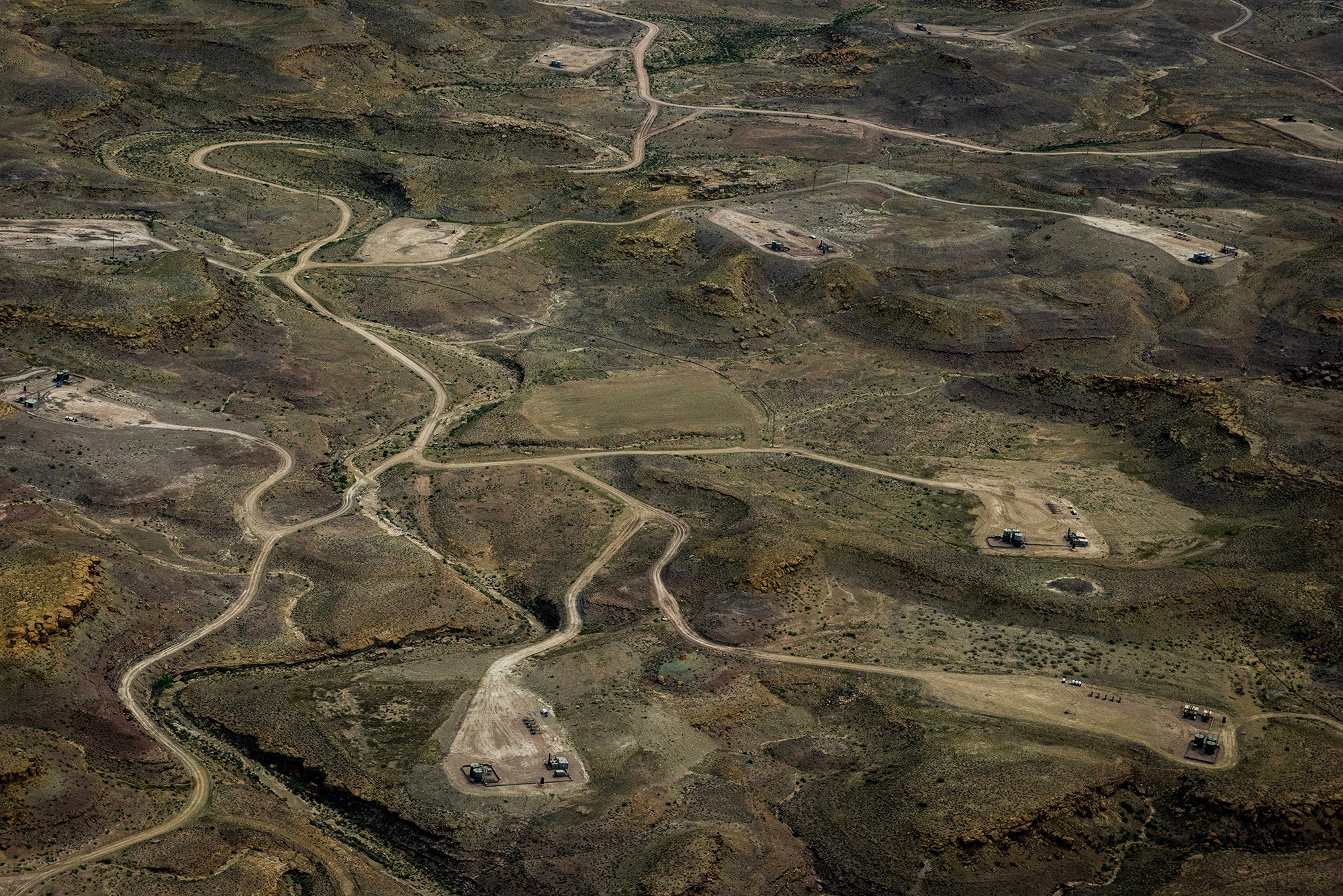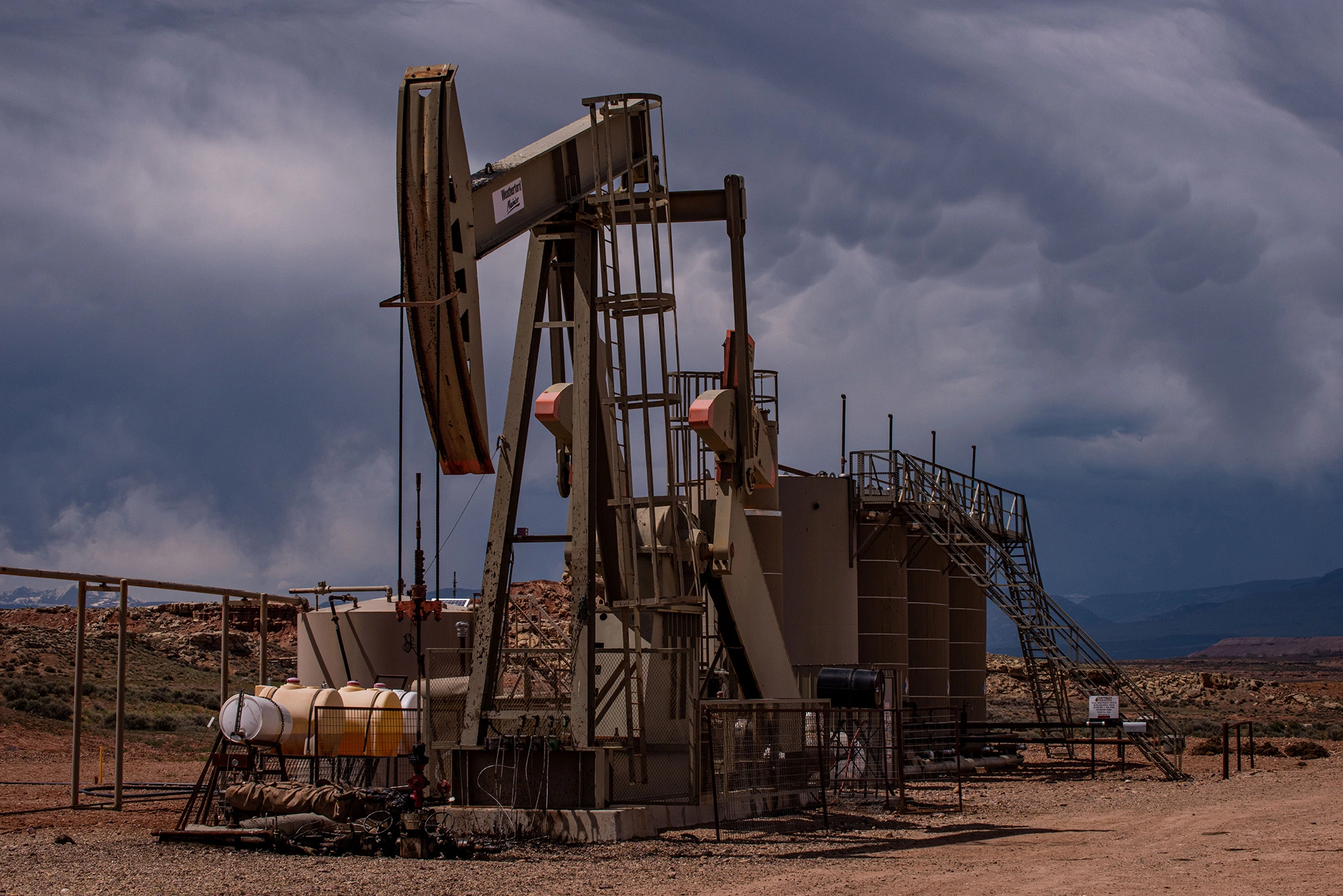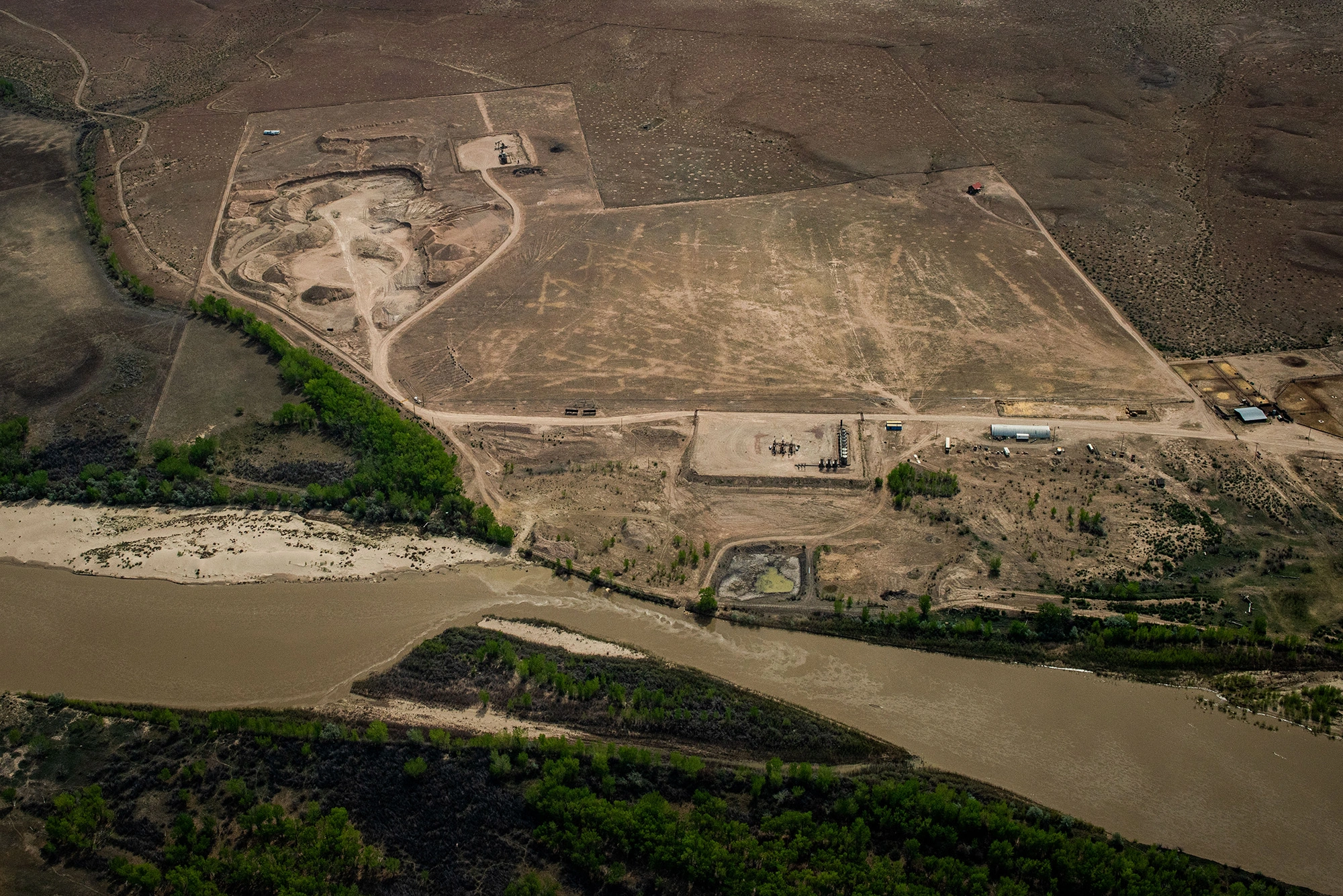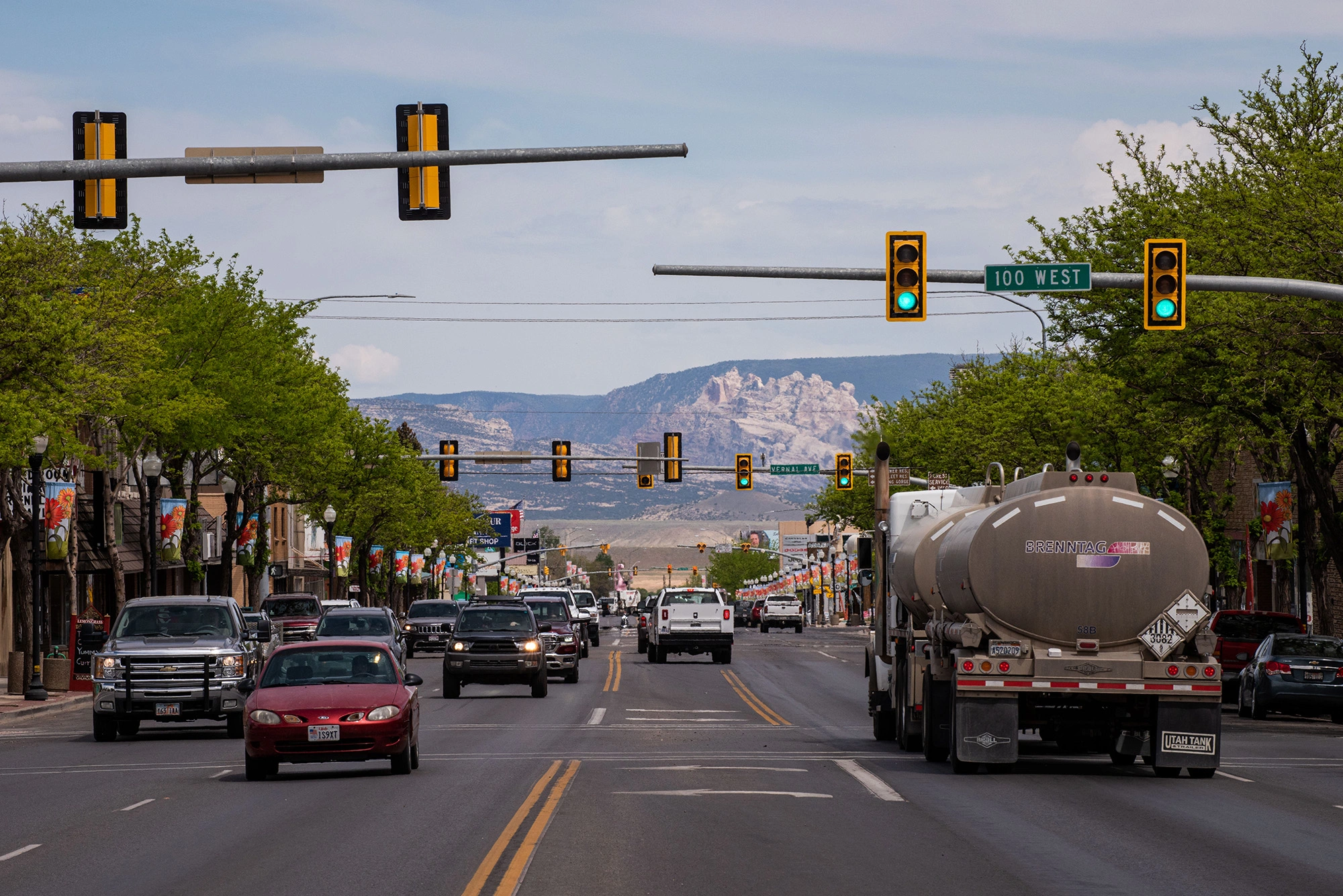
Melissa Bailey/KFF Health News
This story was originally republished by NPR on May 22, 2023 and by KFF Health News on May 24, 2023.
By Melissa Bailey, KFF Health News
When John Mestas’ ancestors moved to Colorado over 100 years ago to raise sheep in the San Luis Valley, they “hit paradise,” he says.
“There was so much water, they thought it would never end,” Mestas says of the agricultural region at the headwaters of the Rio Grande.
Water Desk Grantee Publication
This story was supported by the Water Desk’s grants program.
Now decades of climate change-driven drought, combined with the overpumping of aquifers, is making the valley desperately dry — and appears to be intensifying the levels of heavy metals in drinking water.
Like a third of people who live in this high alpine desert, Mestas relies on a private well that draws from an aquifer for drinking water. And, like many farmers there, he taps an aquifer to water the alfalfa that feeds his 550 cows.
“Water is everything here,” he says.
Mestas, 71, is now one of the hundreds of well owners participating in a study that tackles the question: How does drought affect not just the quantity, but the quality, of water?
The study, led by Kathy James, an associate professor at the Colorado School of Public Health, focuses on arsenic in private drinking wells. Arsenic, a carcinogen that occurs naturally in soil, has been appearing in rising levels in drinking water in the valley, she says. In California, Mexico, and Vietnam, research has linked rising arsenic levels in groundwater to drought and the overpumping of aquifers.
As the West grapples with a megadrought that has lasted more than two decades, and states risk cutbacks in water from the shrinking Colorado River, the San Luis Valley offers clues to what the future may hold.
Nationwide, about 40 million people rely on domestic wells, estimates Melissa Lombard, a research hydrologist for the U.S. Geological Survey. Nevada, Arizona, and Maine have the highest percentage of domestic well users — ranging from about a quarter to a fifth of well users — using water with elevated arsenic levels, she found in a separate study.
During drought, the number of people in the contiguous U.S. exposed to elevated arsenic from domestic wells may rise from about 2.7 million to 4.1 million, Lombard estimates, using statistical models.
Arsenic has been shown to affect health across the human life span, beginning with sperm and eggs, James says. Even a small exposure, added up over the course of a person’s life, is enough to cause health problems, she says.
In a previous study in the valley, James found that lifetime exposure to low levels of arsenic in drinking water, between 10 and 100 micrograms per liter, or µg/L, was linked to a higher risk of coronary heart disease. Other research has tied chronic exposure to low-level arsenic to hypertension, diabetes, and cancer. Pregnant women and children are at greater risk for harm.
The World Health Organization sets the recommended limit on arsenic in drinking water at 10 µg/L, which is also the U.S. standard for public water supplies. But research has shown that, even at 5 µg/L, arsenic is linked to higher rates of skin lesions.
“I think it’s a problem that a lot of people are not aware of,” Lombard says. “Climate change is probably going to impact water quality,” she said, but more research is needed to understand how and why.
A hotbed of hope
The San Luis Valley in southern Colorado, which has hosted a wealth of research and innovation, is the ideal place to explore those questions — and potential solutions.

Melissa Bailey/KFF Health News
Known for its stunning mountain views and the nearby Great Sand Dunes National Park and Preserve, the valley spans a region roughly the size of Massachusetts, making it North America’s largest alpine valley. Rich in Indigenous, Mexican, and Spanish heritage, the valley contains 500,000 acres of irrigated land, producing potatoes, alfalfa for hay, and beer barley for Coors. It’s home to nearly 50,000 people, many of them farmworkers and about half of them Hispanic. It’s also a challenging place to live: Counties here rank among the poorest in the state, and rates of diabetes, kidney disease, and depression run high.
Since it rains very little, about 7 inches a year on average, farmers rely on two large aquifers and the headwaters of the Rio Grande River, which continues on to Mexico. Snowmelt from the looming Sangre de Cristo and San Juan mountain ranges recharges the supply each spring. But as the climate warms, there’s less snow, and water evaporates more quickly from the ground and crops.
“This entire community, this culture, was built around irrigated agriculture,” says state Sen. Cleave Simpson of Alamosa, a Republican and a fourth-generation farmer. But since 2002, the valley’s unconfined aquifer has lost 1 million acre-feet of water — or enough to cover 1 million acres of land in water 1 foot deep — due to persistent drought and overuse. Now the communities in the valley face a deadline to replenish the aquifer, or face a state shutdown of hundreds of irrigation wells.
“We’re a decade ahead of what’s happening in the rest of Colorado” because of the intensity of water scarcity, says Simpson, who manages the Rio Grande Water Conservation District.
“This is not drought anymore — this is truly the aridification of the West,” Simpson says. That’s how scientists are describing a long-term trend toward persistent dryness that can be stopped only by addressing human-caused climate change.
James, who is an epidemiologist and engineer, has been studying links between climate and health in the valley for the past 15 years. She found that during dust storms in the San Luis Valley, which have been growing more frequent, more people visit the hospital for asthma attacks. And she has surveyed farmworkers on how drought is affecting their mental health.
In the domestic well study, James is focusing on arsenic, which she says has been gradually increasing in valley drinking wells over the past 50 years. Arsenic levels in San Luis Valley groundwater are “markedly higher than [in] many other areas of the U.S.,” according to James. Arsenic concentrations have ranged from less than 2 to 150 µg/L between 1986 and 2014, James found in an earlier study. She is working on updating the data and also investigating ethnic disparities. One study there showed Hispanic adults had higher levels of arsenic in their urine than non-Hispanic white adults did. (Hispanic people can be of any race or combination of races.)
James now aims to test 1,000 private wells in the valley to explore the connections between drought, water quality, and health. So far, she said, a small proportion of wells show elevated levels of heavy metals, including arsenic, uranium, tungsten, and manganese, which occur naturally in the soil. Unlike public water supplies, private domestic wells are not regulated, and they may go untested for years. James is offering participants free water testing and consultation on the results.

Melissa Bailey/KFF Health News
In Conejos County, John Mestas’ daughter, Angie Mestas, jumped at the chance for a free test, which would cost $195 at a local lab. Angie, a 35-year-old schoolteacher, said she used a lifetime of savings to drill a drinking well on her plot of land, a wide-open field of chamisa with sweeping views of the San Luis Hills. But she won’t drink from it until she tests for arsenic and E. coli, which are common in the area. As she awaits test results, she has been hauling 5-gallon jugs of water from her father’s house each time she spends the weekend at her newly constructed yurt.
A colorless, odorless threat
Meanwhile, Julie Zahringer, whose family settled in the valley from Spain nearly 400 years ago, has been watching water-quality trends firsthand. Zahringer, 47, grew up driving a tractor on her grandfather’s ranch near San Luis, Colorado’s oldest town — and hanging out in the lab with her mother, a scientist.
As a chemist and laboratory director of SDC Laboratory in Alamosa, Zahringer tests private and public drinking water in the valley. She estimates that 25% of the private wells tested by her lab show elevated arsenic.
“It’s colorless, it’s odorless,” Zahringer says. “Most families don’t know if they’re drinking arsenic.”
To Zahringer, the link to climate seems clear: During dry periods, a well that usually hovers around 10 µg/L of arsenic may easily double or triple in concentration, she says. One reason is that there’s less water to dilute the natural contaminants in the soil, though other factors are at play. The arsenic levels used to be fairly stable, she says, but after 20 years of drought, they’re fluctuating wildly.
“Now, more and more rapidly, I’m seeing the same well that I just tested three years ago — it doesn’t even look like the same well” because levels of contaminants have risen so much, says Zahringer, who also serves as a member of the Colorado Water Quality Control Commission. At her own drinking well, the arsenic level jumped from 13 to 20 µg/L this year, she says.
Zahringer’s observations are important firsthand anecdotes. James aims to explore, in a rigorous scientific study with a representative sample of wells and extensive geochemical data, the prevalence of arsenic and its connection to drought.
In California and Vietnam, research has linked rising arsenic levels in drinking water to land subsidence — when the ground sinks due to aquifer overpumping, which happens more during drought.
Meanwhile, community leaders in the valley are adapting in impressive and innovative ways, James says.
Zahringer said if arsenic shows up in a private well, she encourages clients to install reverse osmosis water filtration at the kitchen sink. The equipment costs about $300 from an outside supplier, though filters costing less than $50 may need to be changed every six to 18 months, she says. People who treat their water for arsenic should continue to test every six months to make sure the filters are effective, says Zahringer. SDC Laboratory offers an arsenic test for $25.
“People don’t want to test their water because it tastes good and their grandpa drank it,” she said. But “the cure for it is so easy.”
A water-quality campaign in 2009, led by the San Luis Valley Ecosystem Council, also found elevated arsenic in wells across the valley. As part of its outreach, the nonprofit worked with real estate agents to make sure that domestic wells are tested before someone buys a home.
That’s what Sally Wier did when she bought a house five years ago on an 8-acre plot in Rio Grande County surrounded by fields of barley and alfalfa. The first time she tested her well, the arsenic level was 47 µg/L, nearly five times the EPA’s limit. Wier installed a reverse osmosis water filtration system, but she said the arsenic level rises before she changes the filters every few months.
“It makes me really anxious,” said Wier, 38. “I’m probably ingesting arsenic. That is not good for long-term health.”
Wier is one of many people working on innovative solutions to the water shortage. As a conservation project manager for Colorado Open Lands, she worked on a deal by which a local farmer, Ron Bowman, was paid to stop irrigating his 1,800-acre farm. The deal marks the first time in the country that a conservation easement has been used to save groundwater for aquifer replenishment, Wier says.
Funneling money toward a solution
In Costilla County, the Move Mountains Youth Project has been paying local farmers, through a government grant, to convert a portion of their land to grow vegetables instead of water-intensive alfalfa. Farmers then train youth to grow crops like broccoli, spinach, and bolita beans, which are sold at a local grocery store. The project aims to nurture the next generation of farmers, and “beat diabetes” by providing locally grown food, says executive director Shirley Romero Otero. Her group worked with three farmers last summer and plans to work with seven this season, if enough water is available, she said.
In another effort, farmers like the Mestas are taxing themselves to draw water from their own irrigation wells. And Simpson, of the Rio Grande Water Conservation District, recently secured $30 million in federal money to support water conservation. The plan includes paying farmers $3,000 per acre-foot of water to permanently retire their irrigation wells.
Since arsenic is not limited to private wells, public agencies have responded, too: The city of Alamosa built a new water treatment plant in 2008 to bring its arsenic levels into compliance with federal standards. In 2020, the state of Colorado sued an Alamosa mushroom farm for exposing its workers to arsenic in tap water.

Melissa Bailey/KFF Health News
At the High Valley Park mobile home community in Alamosa County, a well serving 85 people has exceeded legal arsenic levels since 2006, when the Environmental Protection Agency tightened its standard from 50 to 10 µg/L. At the most recent test in February, the concentration was 19 µg/L.
On an April afternoon, four children bounce on a trampoline and chased one another up a tree.
“Uncle, I’m thirsty and there’s no bottled water left,” said one child, catching her breath.
The well serves 28 households. But tenants from five homes say they haven’t been drinking the water for years, not because of arsenic — which some said they were not aware of — but because the water often comes out brown.
Eduardo Rodriguez, 29, who works in excavation, says he buys two cases of bottled water every week for his wife and five children.
“It needs to be fixed,” he says.
“The water sucks,” agrees Craig Nelson, 51, who has lived in the mobile home park for two years. “You don’t drink it.” Because the well serves at least 25 people, it is regulated by the state.
Landlord Rob Treat, of Salida, bought the property in February 2022 for nearly half a million dollars. Getting arsenic within federal standards has been difficult, he says, because arsenic levels fluctuate when nearby farmers tap the aquifer to irrigate their crops. Treat was using chlorine to convert one kind of arsenic into a more treatable form. But if he added too much chlorine, he says, that created its own toxic byproducts, which have also flagged regulators’ attention.
Under pressure from the state, Treat began upgrading the water treatment system in May, at a cost of $150,000. To cover the cost, he said, he aims to raise the monthly rent from $250 to $300 per lot.
“If the state would stay out of it,” he grumbled, “we could supply affordable housing.”
Meanwhile, John Mestas is still awaiting results on his drinking well.
When he returns from traveling out-of-state to move his cattle herd, “the first thing I do whenever I walk in the house is drink me two glasses of this water,” Mestas says. “That’s the one thing I miss, is my water and my dogs. They’re jumping all over me while I’m drinking my water. I don’t know who’s happier, me drinking the water or them jumping on me.”
This article was supported by The Water Desk, an independent journalism initiative based at the University of Colorado-Boulder’s Center for Environmental Journalism.
KFF Health News, formerly known as Kaiser Health News (KHN), is a national newsroom that produces in-depth journalism about health issues and is one of the core operating programs at KFF — the independent source for health policy research, polling, and journalism.
The Water Desk’s mission is to increase the volume, depth and power of journalism connected to Western water issues. We’re an initiative of the Center for Environmental Journalism at the University of Colorado Boulder. The Water Desk launched in April 2019 with support from the Walton Family Foundation. We maintain a strict editorial firewall between our funders and our journalism.












